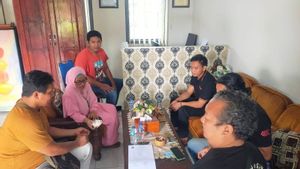JAKARTA - Food microbiologist from Brawijaya University, Anugerah Dany Priyanto, revealed a food processing technique known as the Pulsed Electric Field (PEF), which is a method that utilizes high electricity to inhibit the growth of rotting bacteria in various food and beverage products.
Anugerah explained that the PEF method works by destroying or creating holes in the membrane of microorganism cells through exposure to high electrical stresses.
In this way, rotting bacteria become inactive, so food products can have a longer shelf life.
"PEF takes advantage of the high voltage principle that causes bacterial cell membranes to burst or give holes. In its application, PEF uses two electrodes, namely positive and negative, so that electricity can flow properly," Anugerah said in an online discussion as quoted by Antara.
During the PEF process, electricity is given repeatedly with a high level of repetition, ensuring that all parts of food products are free from rotting microorganisms that are still active. This method is usually used in liquid or semi-solid food products.
The PEF is generally applied to liquid or semi solid products, such as yogurt, sauce, chicken sauce, and the like. In this process, we can also add hydrocoloids to form jel, "he explained.
SEE ALSO:
Anugerah added, to optimize the results of rotting bacteria inactivation and extend the shelf life of products, PEF can be combined with other techniques, such as mild heating, other non-thermal processing methods, or the use of antimicrobial packaging.
There are several factors that affect the effectiveness of the PEF method in activation of rotting bacteria, such as the intensity of the electric field, voltage frequency, processing duration, medium temperature, and the initial number of bacteria in the product.
"The initial contamination levels as well as the growth phase of bacteria in the product also play an important role in determining the intensity needs of the PEF to ensure that microorganisms can be effectively activated," he added.
The English, Chinese, Japanese, Arabic, and French versions are automatically generated by the AI. So there may still be inaccuracies in translating, please always see Indonesian as our main language. (system supported by DigitalSiber.id)












